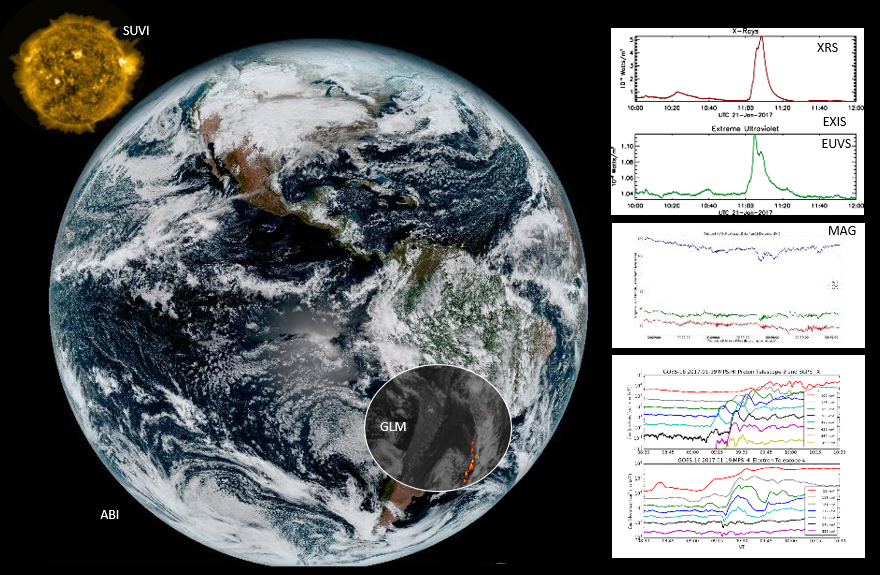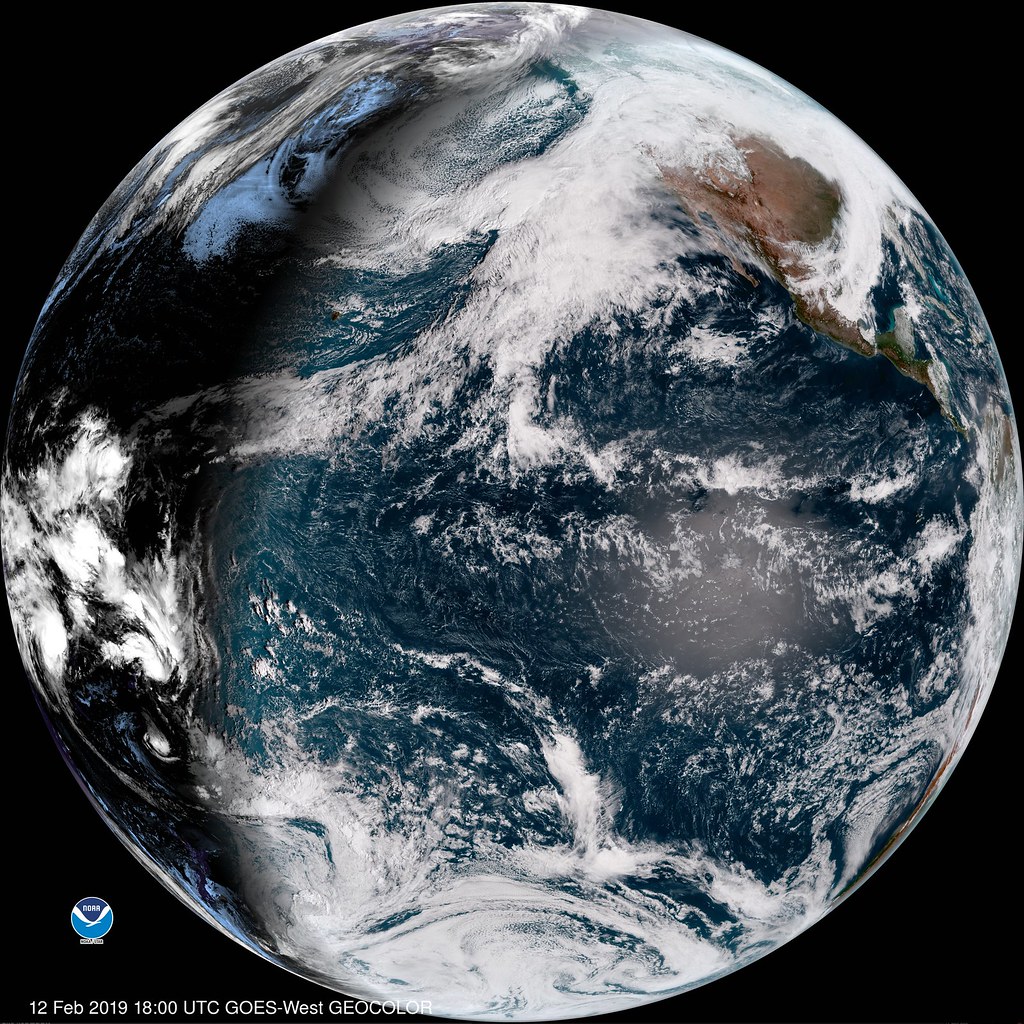Satellite Status
GOES-16 Status
 GOES-16 became operational as NOAA’s GOES East on December 18, 2017, replacing GOES-13. From its operational location of 75.2 degrees west longitude,
GOES-16 is keeping watch over most of North America, including the continental United States and Mexico, as well as Central and South America, the Caribbean,
and the Atlantic Ocean to the west coast of Africa.
GOES-16 became operational as NOAA’s GOES East on December 18, 2017, replacing GOES-13. From its operational location of 75.2 degrees west longitude,
GOES-16 is keeping watch over most of North America, including the continental United States and Mexico, as well as Central and South America, the Caribbean,
and the Atlantic Ocean to the west coast of Africa.
Learn more about GOES-16’s transition to operations >>>
GOES-16 operational imagery via the GOES East Image Viewer >>>
More information is available on the Useful Links page.
GOES-17 Status
 During post-launch testing of the GOES-17 ABI instrument, an issue with the instrument’s cooling system was discovered. The loop heat pipe (LHP) subsystem, which transfers heat from the ABI electronics to the radiator, is not operating at its designed capacity. The consequence of this is that the ABI detectors cannot be maintained at their intended temperatures under certain orbital conditions. Inadequate cooling of the infrared channels leads to partial loss of imagery during some of the overnight hours before and after the vernal and autumnal equinoxes.
During post-launch testing of the GOES-17 ABI instrument, an issue with the instrument’s cooling system was discovered. The loop heat pipe (LHP) subsystem, which transfers heat from the ABI electronics to the radiator, is not operating at its designed capacity. The consequence of this is that the ABI detectors cannot be maintained at their intended temperatures under certain orbital conditions. Inadequate cooling of the infrared channels leads to partial loss of imagery during some of the overnight hours before and after the vernal and autumnal equinoxes.
Infrared signals with long wavelengths can be swamped by infrared light emitted by warm parts of the imager, degrading the signal. Cooling the detectors reduces this thermal “noise” in observations. During some nighttime hours during certain parts of the year (before and after the vernal and autumnal equinoxes), the sun heats up seven of the ABI detectors faster than they can be cooled. The detectors become warmer than they’re designed to operate, and they begin to radiate at temperatures closer to the wavelengths they’re attempting to detect from the Earth. Eventually, local emissions and dark current noise overwhelm the signal from the Earth, and the channels saturate, meaning a useful signal is not available.
A great deal of progress has been made to optimize the performance of the GOES-17 data and the instrument is currently delivering 97% of the data it was intended to provide. GOES-17 is observing with more channels, at a higher resolution, and with more rapid refresh than what is available from the previous GOES West satellite. NOAA is confident the GOES constellation will continue to meet the operational needs of the National Weather Service and forecasters across the nation.
GOES-17 moved into operational service as GOES West on February 12, 2019, and will operate in tandem with GOES-15 through December 2019 to allow for assessment of the performance of GOES-17 as the GOES West operational satellite.
LATEST STATUS: OCTOBER 3, 2018
The Independent Review Team (IRT) provided its final GOES-17 ABI cooling system anomaly outbrief on October 3, 2018. The investigation concluded that the most likely cause of the thermal performance issue is foreign object debris (FOD) blocking the flow of the coolant in the loop heat pipes. A series of ground-based tests introducing FOD into test pipes support FOD as the most likely cause. A second potential cause, mechanical failure, was investigated and deemed unlikely.
The IRT recommended changes to the design of the ABI radiators for GOES-T and GOES-U to decrease the chance of future cooling system anomalies. The new design utilizes a simpler hardware configuration and ammonia loop heat pipes instead of propylene. Redesign efforts are underway and the Critical Design Review is scheduled to take place in December 2019.
For the latest information on this topic go ot the GOES-17 ABI performance webpage: https://www.goes-r.gov/users/GOES-17-ABI-Performance.html.



